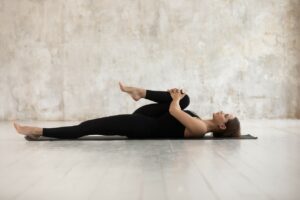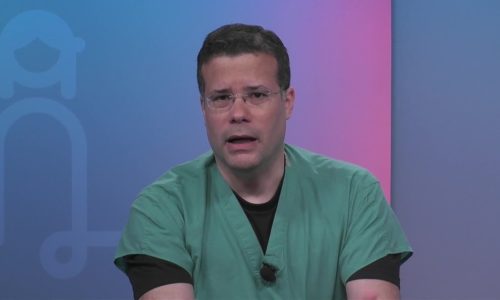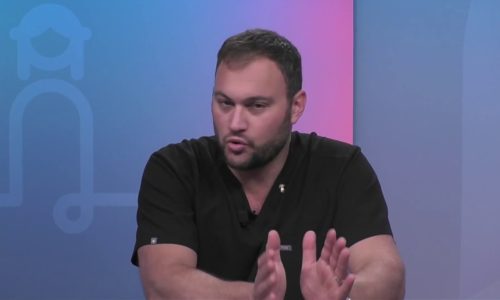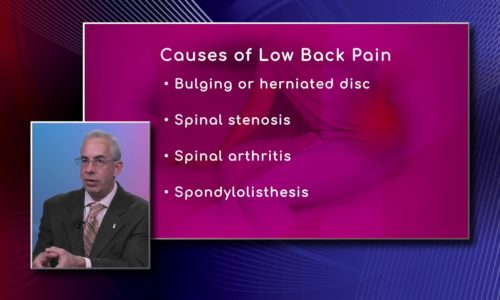Does yoga help with back pain? |

According to a 2006 report released by the Centers for Disease Control (CDC), one in four U.S. adults say that they suffered a day-long bout of back pain in the past month, and 1 in 10 say the pain lasted a year or more. Standard treatment recommendations for acute low back pain currently include the use of medications (Tylenol, NSAIDs, muscle relaxers, etc.), advice to remain as active as possible, application of heat, and spinal manipulation (Chiropractic care). With this treatment, the great majority of cases of acute pain resolve with no long-term consequences. In some cases, however, the pain lingers and becomes chronic in nature.
What is chronic low back pain? The causes for chronic back pain—defined as pain that lasts more than three months—often remain unidentified with limited treatment options. Possible exceptions to this are when symptoms, such as fever, loss of bowel or bladder control, pain when coughing, or progressive weakness in the legs are present. Those symptoms could indicate that the chronic back pain is due to a serious condition, such as inflammatory arthritis, herniated disc, infection, fracture, or cancer. In the majority of cases, surgery is not thought to be an appropriate treatment option.
Since treatment options are limited for most chronic low back pain sufferers, many have turned to alternative and complementary therapies in search of relief. These therapies include acupuncture, spinal manipulation, Pilates, massage therapy, and yoga. While there is little evidence for the benefit of yoga in the management of acute lower back pain, there is a growing body of research supporting the use of yoga in the treatment of chronic back pain.
Which yoga practices appear to help? Yoga is a mind/body practice with historical origins in ancient Indian religion. Various schools of yoga exist, but most have in common the blending of meditative practices, breathing techniques and physical postures to achieve strength, flexibility, and inner peace. Many people practice yoga in order to maintain their health and well-being, improve physical fitness, and enhance their quality of life, but yoga also has an application in the treatment of specific health conditions such as chronic pain, anxiety, and hypertension. One type of yoga that has been evaluated specifically in the treatment of chronic low back pain is a method based on the teachings of B.K.S. Iyengar (pronounced eye-en-gar). This is a form of hatha yoga that places emphasis on the physical alignment of the body in its poses. The Iyengar method employs the use of props, such as pillows, blocks and chairs to help the student achieve perfect alignment in a gradually progressive manner.
What is the evidence for the benefits of yoga? A meta-analysis (pooling data from multiple studies) looked at 10 randomized controlled trials to assess the effectiveness of yoga in the treatment of chronic low back pain. The parameters that the researchers sought to asses included: 1) relief of pain, 2) reduction in disability, and 3) health-related quality of life. Following an analysis of the data, strong evidence for short- and long-term relief of pain and moderate effectiveness in regard to reduction in back pain-related disability was found. No effect on health-related quality of life was noted.
A more recent study, funded by the National Center for Complementary and Alternative Medicine (NCCAM) that was not included in the meta-analysis mentioned above, looked at the effect of Iyengar yoga on chronic back pain. The researchers were also interested to see if practicing yoga had an effect on depression or the use of pain medications among study subjects. The researchers conducting this study concluded that Iyengar yoga decreased functional disability, pain, and depression in people with chronic low-back pain. A second NCCAM-funded study found that once-weekly yoga classes relieved pain, improved function, and reduced the need for pain medication in low-income populations with chronic low-back pain.
The predominance of scientific evidence indicates that people with chronic low back pain stand to benefit from practicing yoga. The Iyengar School of yoga may be particularly appropriate since it appears to take more gradual approach in performing its poses. Of interest also is that no adverse events from practicing yoga were reported from any of the studies mentioned. In order to achieve best results, it is advisable to practice yoga under the guidance of a qualified teacher.
If you have any more questions just Ask Hanna, our health advisors are here to help.
Image: ©Shutterstock / fizkes








